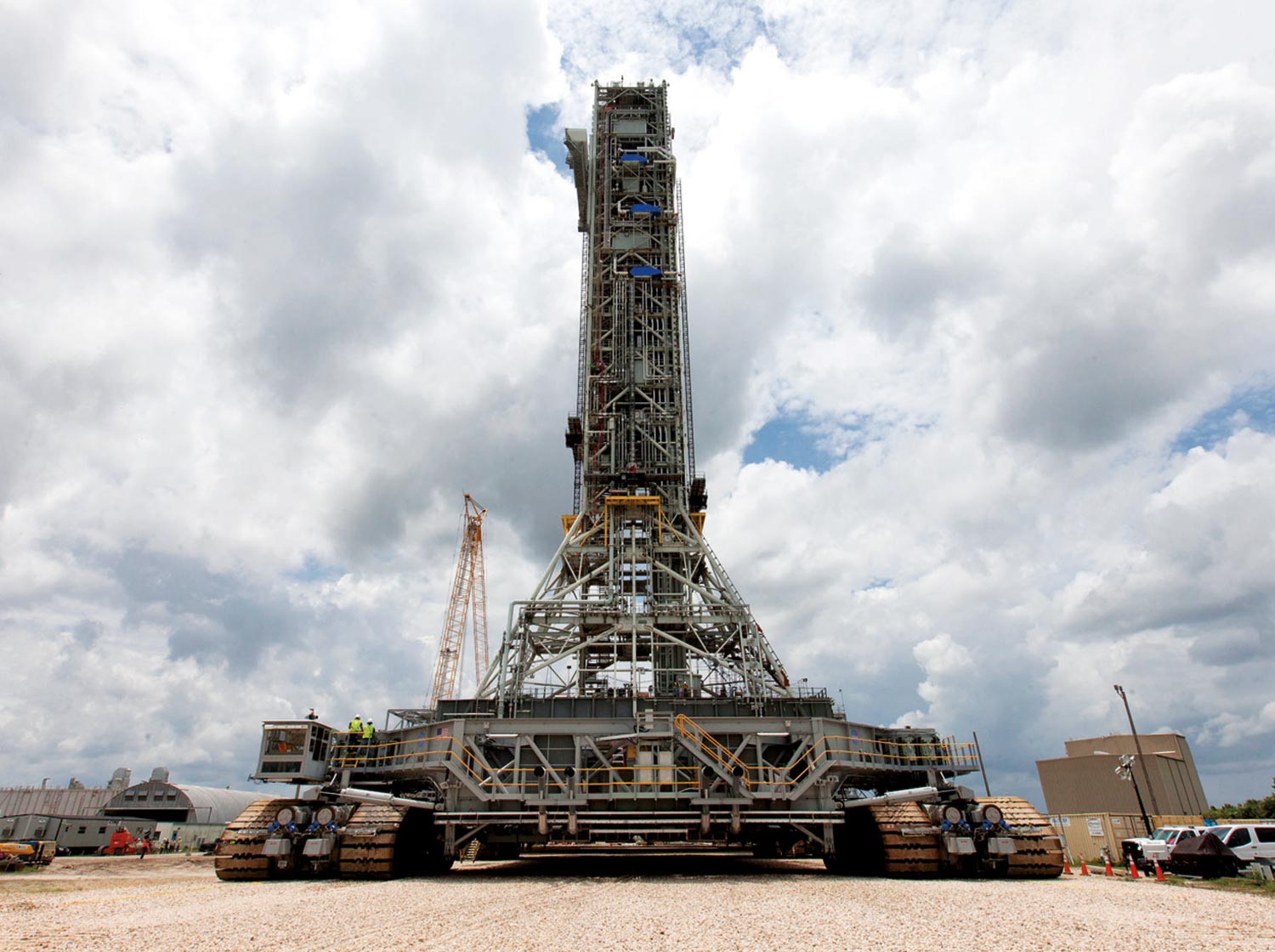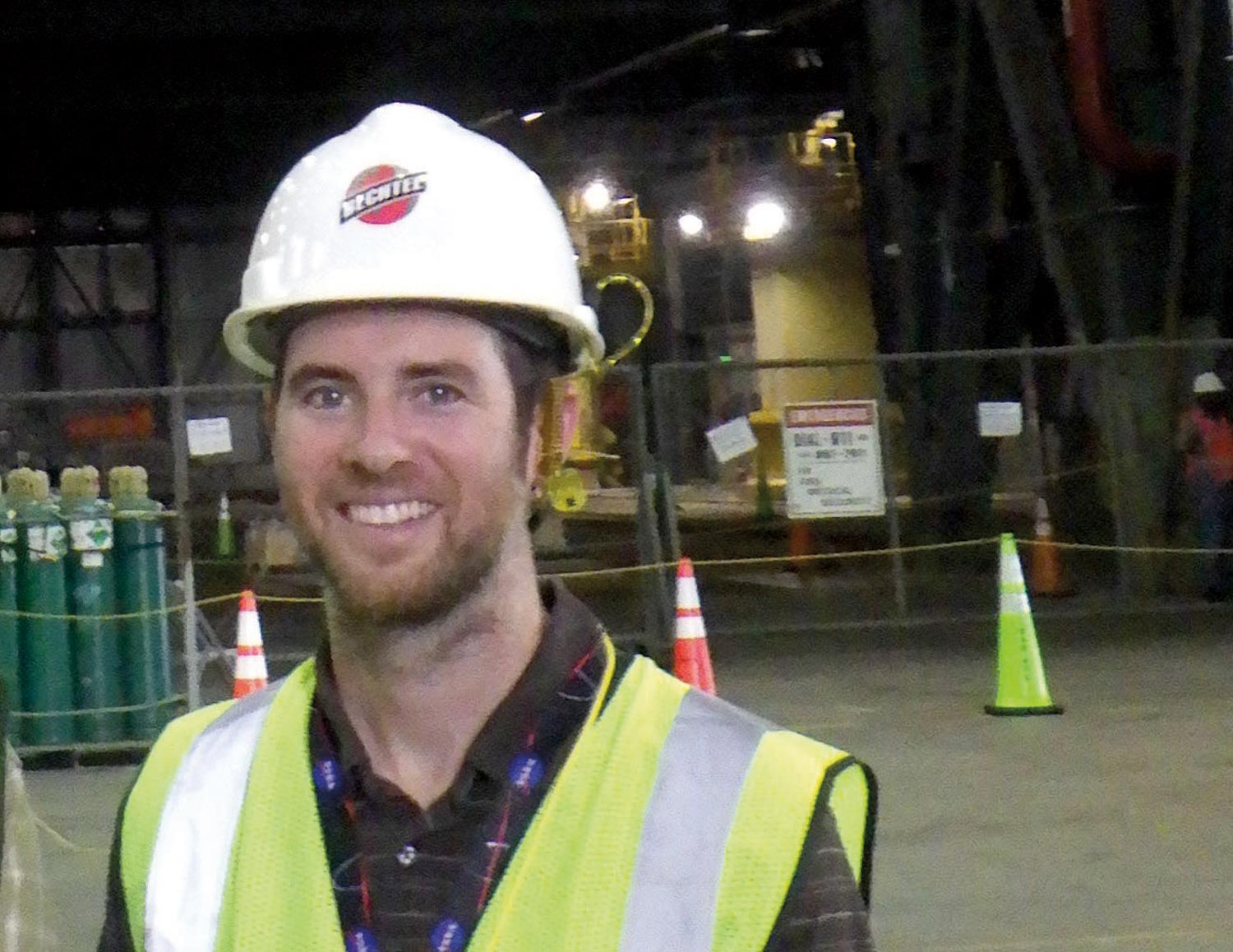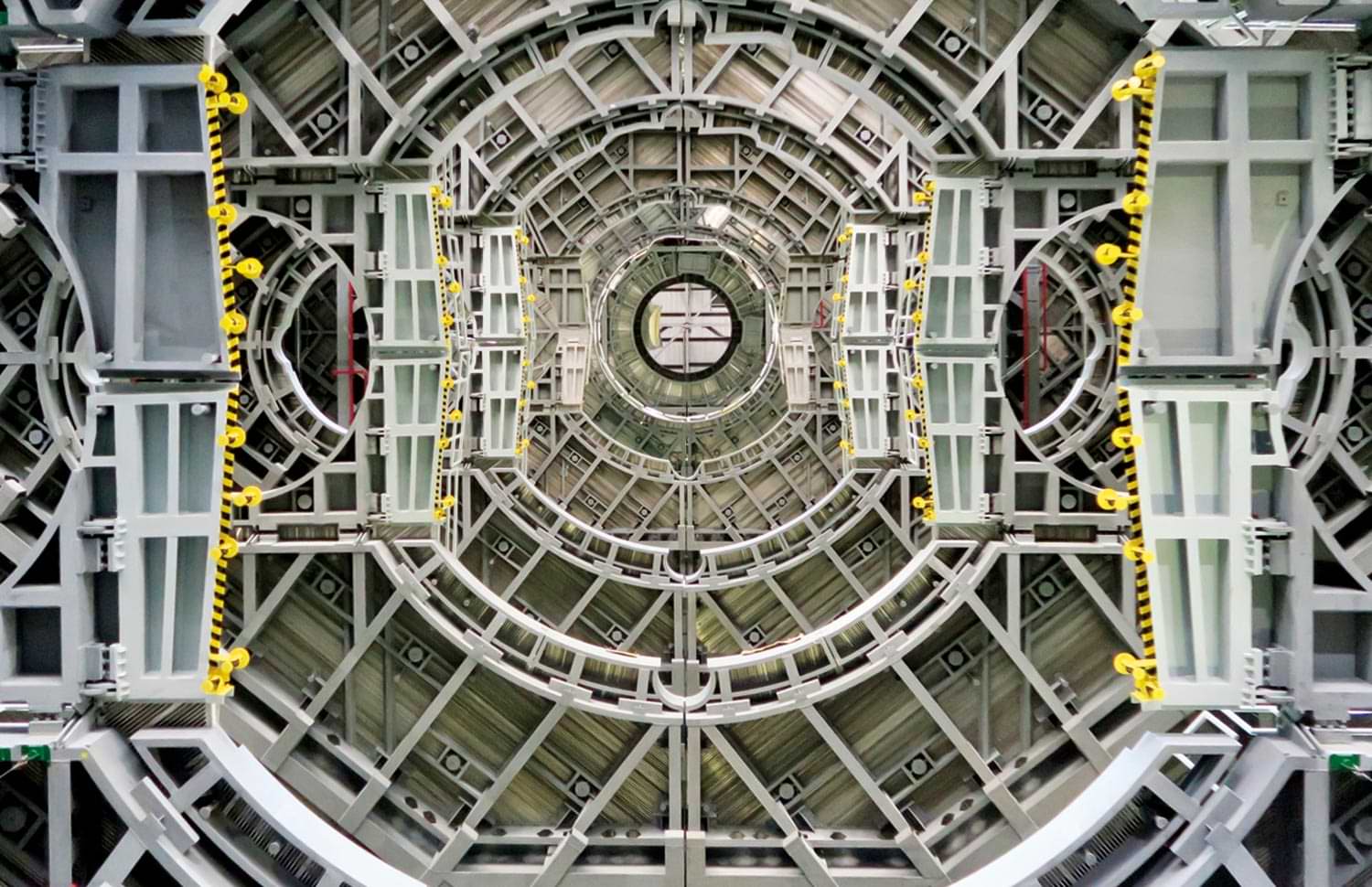A Multigenerational Moon Shot
hen he was in grade school, Peter Carrato ’76 remembers his mother waking him early to watch the first men blast off to the moon. “I’ve loved space ever since I was a kid,” he says. “Watching NASA launches has been a part of my life as long as I can remember.” Now, as Carrato nears the end of a successful career as a civil engineer with construction giant Bechtel, those launches are about to become an even bigger part of his life. He is helping to oversee the design for a new mobile launch tower that will send astronauts back to the moon once more.



Below: Kevin MacLeod ’09 spearheaded the design of the ML2.
VERSATILITY IS ESSENTIAL
A launch operation will begin with ML2 in NASA’s iconic Vehicle Assembly Building about 5 miles from the launch pad. Here engineers stack and assemble the rocket on its deck. Then a giant crawler — a platform the size of a baseball infield riding on gargantuan tank treads — will pick up the launcher, rocket and all, and transport everything to the launch site. All that movement requires a versatile structure that can adapt to many changing conditions.
“Structures don’t usually get up and crawl around and then have some giant rocket ignite on top of them to send people to the moon,” Carrato says. To accommodate a larger rocket, with dozens of ancillary systems, including sensors, cameras, cryogenics and pneumatics, the launcher must be significantly more advanced than previous mobile launchers. “This is possibly the most complex steel structure anyone has ever worked on,” Carrato says. He is well-qualified to make such an assessment.
After graduating from Bucknell, he began designing nuclear power plants for Bechtel. “They use every type of engineering — mechanical, nuclear, chemical, electrical,” he says. “I used every textbook from Bucknell within the first two years of starting work.”


FROM LEGOS TO LAUNCH PAD
MacLeod was working for engineering firm Thornton Tomasetti when he heard about an opportunity to support the new moon launch program from Eric Weaver ’08, who works for NASA. The challenge and impact of the ML2 project excited him so much that when the space agency put the contract out to bid, he applied to every company on its short list. He finally took a job with Bechtel once NASA awarded the contract to the firm. “It’s awesome to be a part of something that will put people on the moon and be able to say it was launched off the structure you designed,” MacLeod says.
“I’ll be the guy, head down, crunching the numbers and running the analyses, and Pete is providing the fresh eyes and technical expertise to point us in the right direction.”
TONS AND TONS OF STEEL
Adding to the difficulty, Artemis is using a brand-new rocket with no launch history, so MacLeod has to account for additional uncertainties in his analysis and calculations. “There’s a lot that keeps me up at night,” MacLeod says.
If there is one thing that allays his nerves while he’s crunching the numbers, however, it’s the partnership he’s developed with Carrato, who adds years of experience to his engineering ingenuity. “I cannot express enough how invaluable his insight is for us ‘younger’ engineers,” MacLeod says. “How do I deal with the pressure of this iconic project? It comes down to confidence in the design, and having folks like Pete, with a lifetime of expertise, available to comb through everything we do to make this project succeed.”